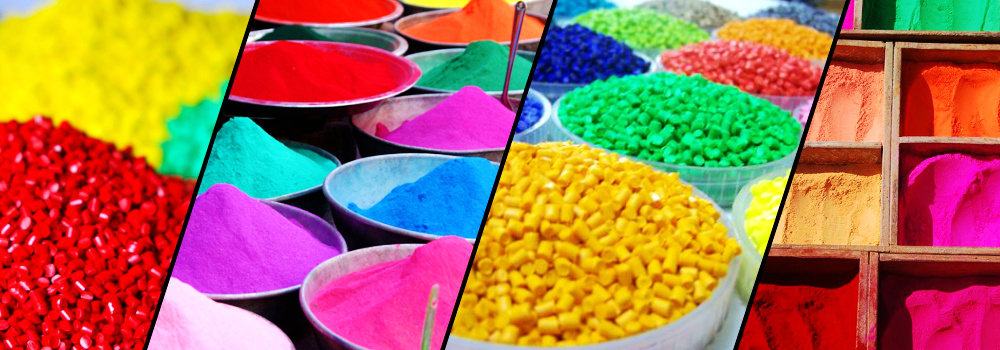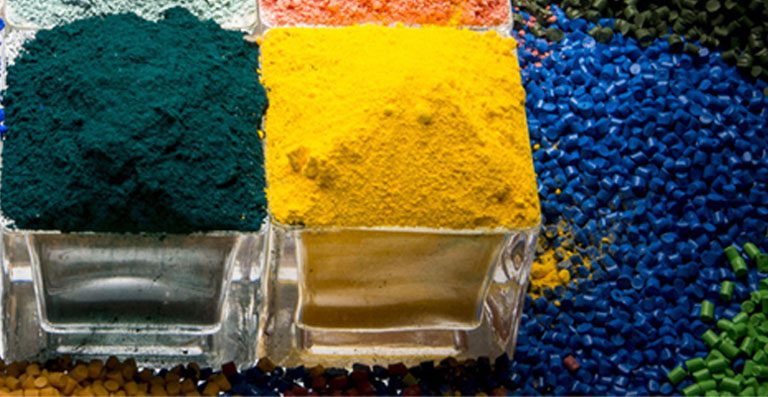10 Practical Reasons to Choose Masterbatch Over Raw Pigment
We interact with colored plastics regularly, but have you ever wondered about the color concentrates that bring visual appeal to these products? To provide colors to the polymers, pigments or masterbatches are used. Let us begin by understanding the difference between the two. Pigments are solid and dry coloring substances. They are usually suspended in a liquid solution to create dyes, ink and, paint. Masterbatches, on the other hand, are more advanced. They are encapsulated by a polymer and feature specific concentrations of additives and pigments.

Both pigment and masterbatch are used for coloring polymer products. However, manufacturers tend to prefer masterbatch. Listed below are ten practical reasons to choose masterbatch over raw pigments.
- It is easy to store, move and manipulate masterbatches as they come in pellet form. Pigments, on the other hand, are difficult to manage because they are in powdered form.
- Color concentrates can be conveniently handled during the manufacturing process when masterbatch is preferred over pigments.
- There is a high risk of pigments becoming airborne during the manufacturing process. This could result in the contamination of adjacent manufacturing lines.
- Masterbatches are engineered and designed for optimal dispersion in a polymer matrix. This enables for the final product to have excellent color distribution. Pigments, on the other hand, do not disperse well on its own.
- It is easy to match the binding agent used within the masterbatch to the polymer for a better melting process.
- The amount of pigment housed in a masterbatch is less. However, the amount of pigment required for a product increases when they are in their raw and powdered form.
- Masterbatch offers excellent color consistency for products than raw pigments.
Additive ingredients in predetermined ratios can be included in a masterbatch. This reduces the chance of variance during processing.
Additive concentrates can be included in a masterbatch to deliver advantageous traits such as flame retardancy, optical brightening, UV stability, and chemical resistance. This helps limit the number of feeds into your process.
You have better control over the opacity of a colored product with masterbatches.
Clearly, masterbatch offers the most reliable and efficient means to color your polymers. If you are in the masterbatch business, then Plastivision India 2020 is a great platform for you to showcase your product range and network with industry professionals. Book your booth today!
Leave a Reply Cancel reply
Recent Posts
- Understanding The Materials That Are Used To Build Plastic Toys
- All You Need To Know About Food-grade Plastics
- A Glance At The Materials That Boost The Performance Of Plastics
- Understanding The Importance Of Exploring New Business Opportunities In The Plastic Industry
- Understanding The Importance Of Investing in R&D For The Plastic Industry
Categories
- 3D Printing
- AIPMA
- Automation
- Automobile Sector
- Bio Plastics
- Environment
- Innovations In Recycling
- Latest Innovations
- Molds & Dies
- News
- Packaging Industry
- Plastic
- Plastic Application
- Plastic Industry
- Plastic Market
- Plastic Myths
- Plastic News From The World
- Plastic Packaging
- Plastic Products
- Plastic Recycling
- Plastic Solar Cells
- Plastic Toys
- Plastic Waste
- Plastic World
- Plastics
- Plastics And Their Applications
- Plastics In Agriculture
- Plastics In Healthcare
- Plastics In Medical Industry
- Plasticulture
- Processing Machinery
- Recycling Machines
- Robotics
- Uncategorized
- Virtual Reality
Archives
- November 2023 (3)
- October 2023 (2)
- September 2023 (3)
- August 2023 (3)
- July 2023 (3)
- June 2023 (3)
- May 2023 (2)
- April 2023 (2)
- March 2023 (2)
- February 2023 (2)
- January 2023 (2)
- December 2022 (3)
- November 2022 (1)
- October 2022 (1)
- September 2022 (2)
- August 2022 (1)
- July 2022 (3)
- May 2022 (3)
- March 2022 (2)
- February 2022 (1)
- January 2022 (1)
- September 2021 (2)
- August 2021 (3)
- July 2021 (4)
- June 2021 (4)
- May 2021 (3)
- April 2021 (2)
- March 2021 (4)
- November 2019 (8)
- October 2019 (8)
- September 2019 (8)
- August 2019 (8)
- July 2019 (8)
- June 2019 (8)
- May 2019 (8)
- April 2019 (8)
- March 2019 (8)
- February 2019 (11)
- January 2019 (8)
- December 2018 (8)
- November 2018 (12)
- October 2018 (12)

